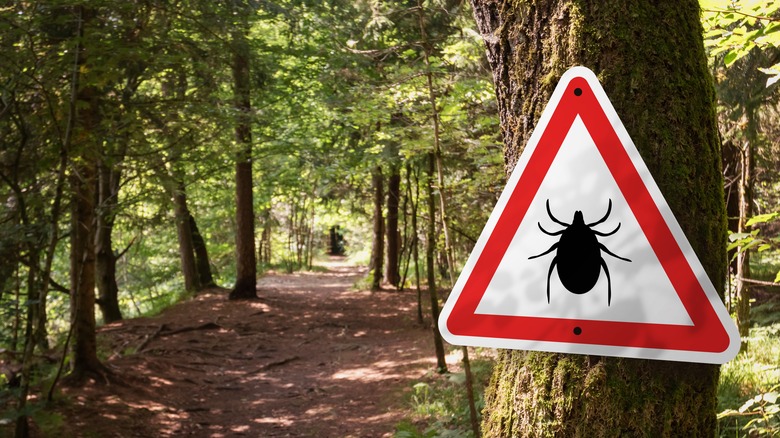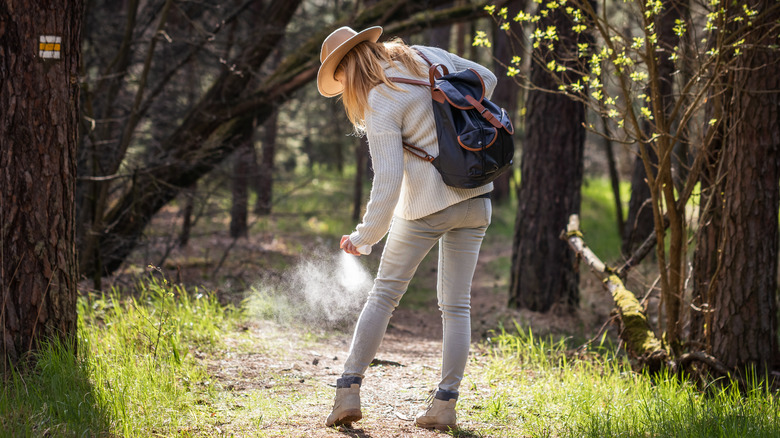Wear Clothing Of This Color To Avoid Ticks On Your Next Outdoor Adventure
Amid the beauty and tranquility of natural landscapes, a tiny yet significant threat lurks — ticks. These pesky creatures are not only a nuisance for outdoorsy folks but are also carriers of various diseases, including Lyme disease. Taking preventive measures to avoid ticks while hiking and camping is crucial for anyone venturing into tick-prone areas (especially between May and July). One effective and simple strategy is the choice of clothing color, specifically wearing light-colored clothing.
Ticks are masters of camouflage, hiding in tall grasses, bushes, and leaf litter, waiting for an opportunity to latch onto a host. Their dark-colored bodies blend with the natural environment, making them nearly invisible to the unsuspecting eye. This is where the color of your clothing can play a pivotal role in tick prevention. Light-colored garments, such as whites, beiges, and pastels, create a contrast, making it easier to spot and remove ticks before they find their way to your skin.
Light-colored clothing can also keep you cooler under the sun in the summertime (when ticks are most active) and encourage more vigilant tick checks. This is crucial because the risk of disease increases the longer a tick remains attached to the host. Cases of Lyme disease have risen by 30% over the last decade! 700 species of hard ticks and 200 species of soft ticks exist worldwide, but in the U.S., the most common perpetrators are Blacklegged Ticks, Lone Star Ticks, and American Dog Ticks — notorious for spreading Spotted Fever Rickettsiosis, Tularemia, and other nasty pathogens, according to the CDC.
Light-colored clothing and other preventative measures
It's also important to consider the type of clothing alongside the color. Long-sleeved shirts and long pants provide a physical barrier against ticks. Tucking your pants into your socks or boots and your shirt into your pants can further minimize the chances of ticks crawling under your clothing. Although it may not be as stylish, combining these practices with light-colored attire maximizes your protection against these pests. Hats are also a good idea!
In addition to wearing light-colored clothing, applying insect repellents containing 20% to 30% DEET or 0.5% permethrin to your skin and gear can enhance your defense. Staying on clear, well-trodden paths and avoiding brushing against vegetation can also reduce your exposure. After returning indoors, shower within two hours to help remove hitchhiker ticks that may have latched onto you or your clothing. Toss your clothes in the laundry as soon as possible on a hot cycle and high-heat dryer setting to kill any potential bugs. Cold water will not kill ticks.
Conducting an immediate full-body tick check is crucial upon returning home. Check all parts of your body, especially your hair, around the ears, under the arms, and behind the knees. If you have pets, examine them as well. Adopting preventive measures against ticks cannot be overstated — early detection and removal are key to preventing infection. By wearing light-colored clothing and following these simple tricks to avoid tick bites, your next outdoor adventure can be worry-free and tick-free.

